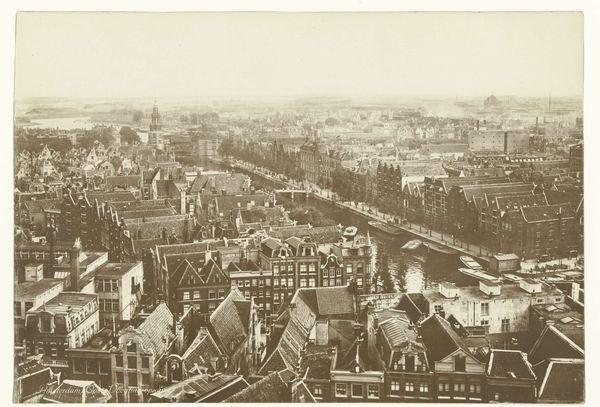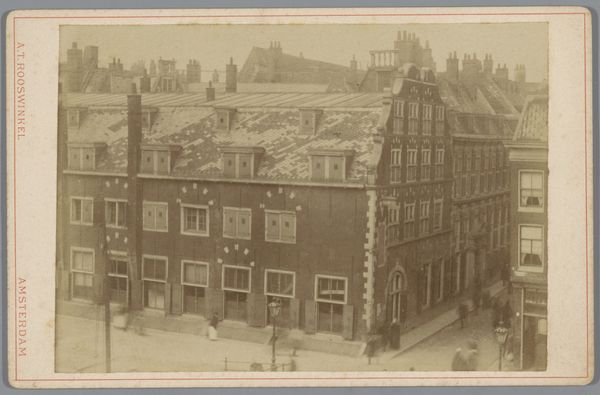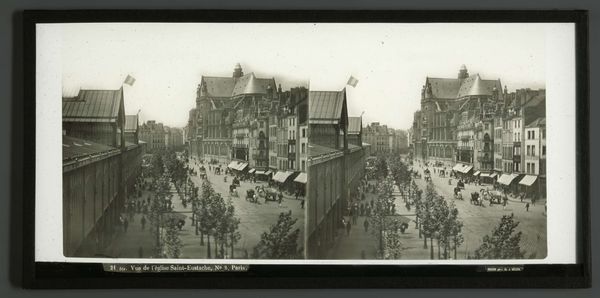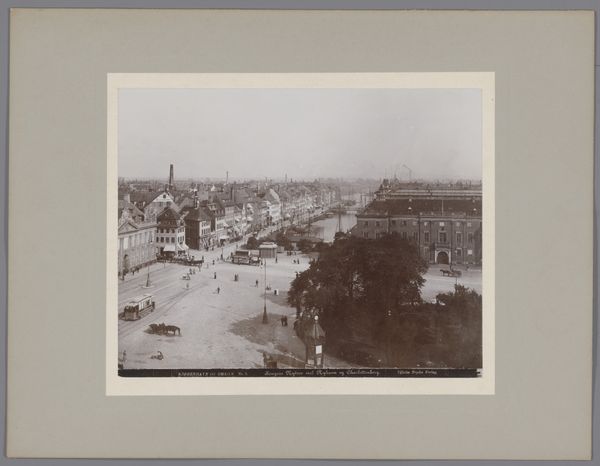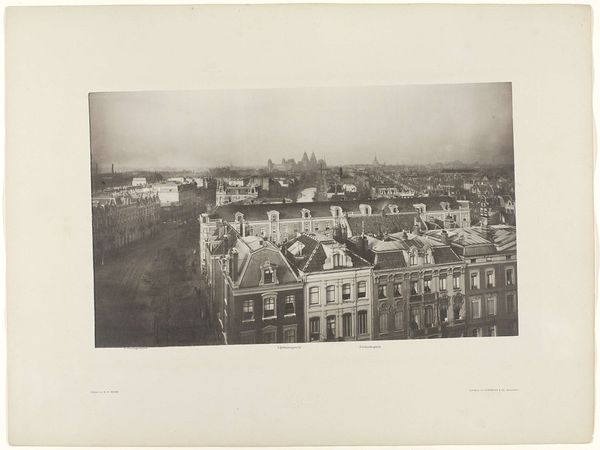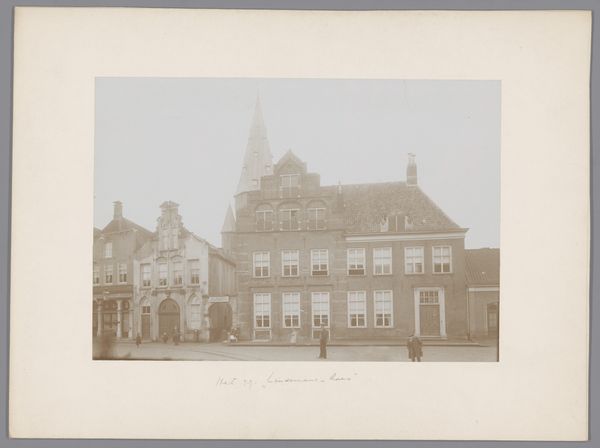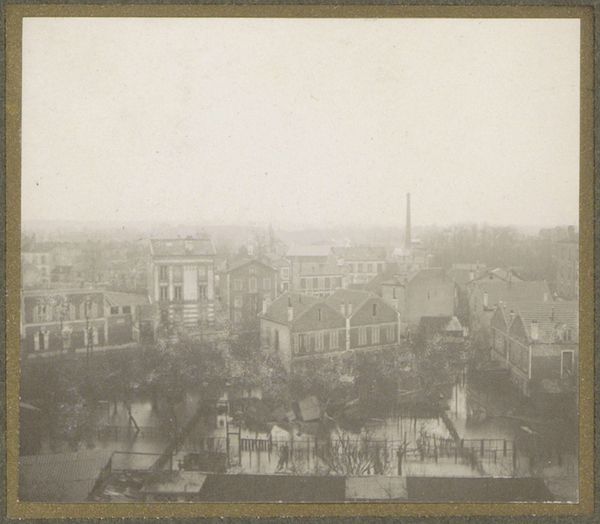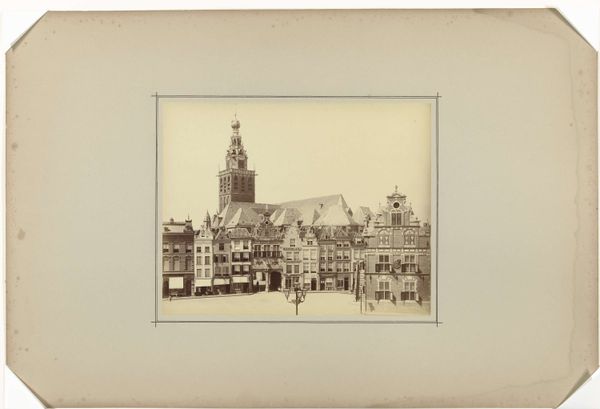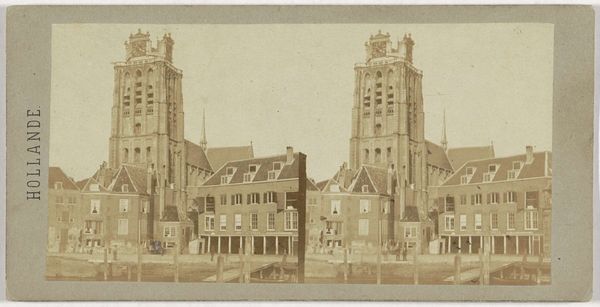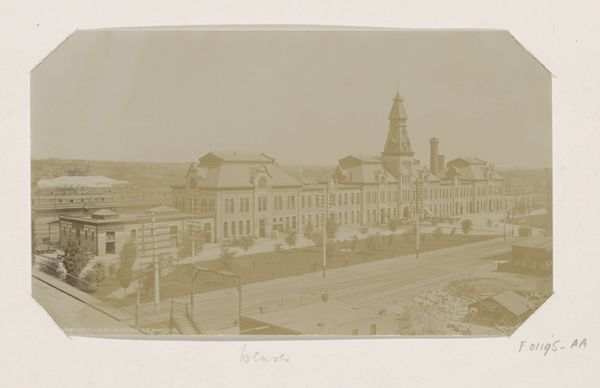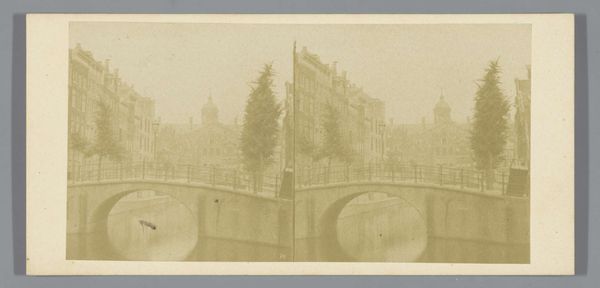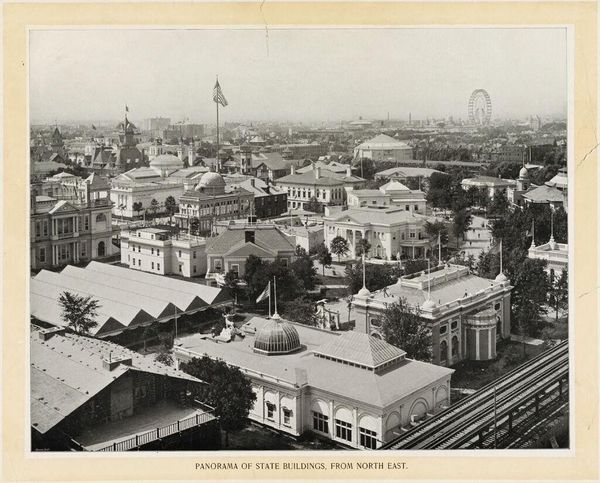
Gezicht op een huizenblok in Rotterdam, op de achtergrond de Laurenskerk c. 1905 - 1907
0:00
0:00
#
excavation photography
#
muted colour palette
#
sculpture
#
charcoal drawing
#
historic architecture
#
unrealistic statue
#
watercolor
#
historical building
#
columned text
#
statue
Dimensions: height 81 mm, width 110 mm
Copyright: Rijks Museum: Open Domain
Curator: Looking at this photographic print, "View of a Block of Houses in Rotterdam, with the Laurenskerk in the Background", attributed to Folkert Idzes de Jong, created around 1905 to 1907. What strikes you first? Editor: The muted color palette really emphasizes the density of the urban environment, this grimy, hazy, industrialized look. It’s almost overwhelming. Curator: Indeed. And in that haze, the Laurenskerk rises prominently. Consider the weight of religious architecture against the backdrop of everyday life represented by the domestic sphere, industry and burgeoning capitalism in Rotterdam. Editor: And look at how those domestic rooftops almost mimic the textures of industry, echoing one another—this is what constitutes urban growth at the time. One makes you think about craftsmanship while the other production. There are all kinds of brick and mortar going on. Curator: Observe how De Jong positions the viewer—we are lifted, seeing the urban sprawl as a signifier of both community and of alienation as modernization takes shape. The architectural space becomes charged. Is it aspirational, foreboding, both? Editor: Certainly. The sheer labor embedded in all these individual structures—the bricks laid, the materials transported and used – yet rendered almost abstract due to its scale, makes me wonder, how did workers at the time view the cityscape they made real? Their work went directly to shape the religious and public institutions of that era. Curator: A worthy thought experiment, considering the photographic print, itself an object of labor. It speaks to a time when our urban centers became potent symbols, signifiers of society’s soul through visual form, echoing religious imagery of previous ages. Editor: And I’m taken back again to the texture of that muted palette - a perfect lens for understanding social and historical materialism in Rotterdam around 1900. Curator: I’ll remember to look again with materialist lenses. Thanks!
Comments
No comments
Be the first to comment and join the conversation on the ultimate creative platform.

